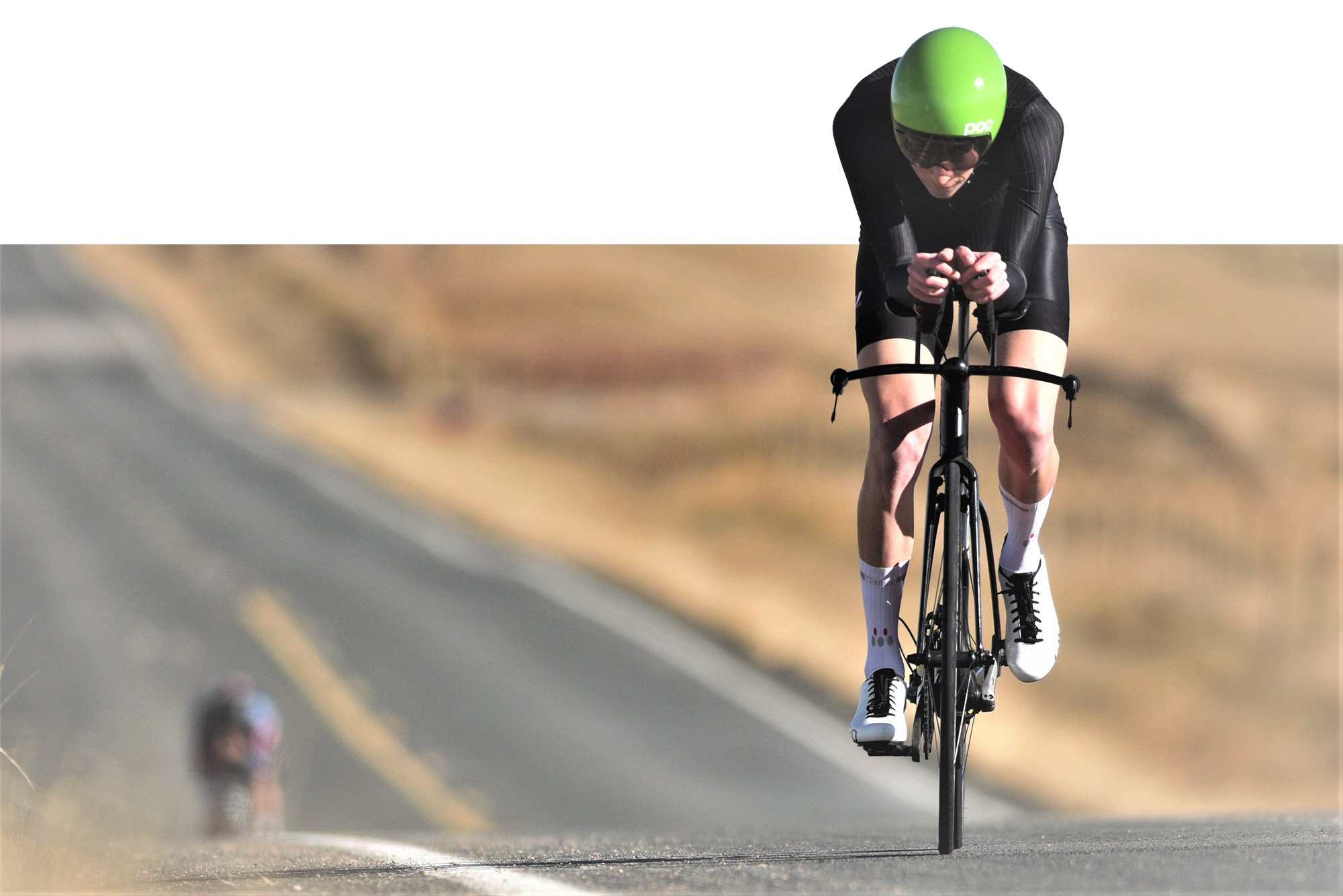FTP Workouts For Cycling – How to Break Your FTP Plateau
Break Your Plateau!
Intro
There I was, stuck in the same place I had been the past 4 seasons. Cheyenne Cañon had always been my litmus test to track my progress each year. At 3 miles and 7%, it was the perfect climb to measure fitness gains. For the first few years of my cycling journey, I had always seen good progress up the climb.
The first year I rode it in 2011 as a new cyclist, it took me probably 35 minutes just to get to the top and I was completely maxed out. By 2015, I had brought my time down to 17:26. I saw another big jump in 2016 and clocked a 15:55, which I was super proud of. However, that would be the last time I would see a substantial improvement for several years.
From 2016 - 2019, I was stuck at that same 15:55. Despite training hard and consistently, I couldn’t seem to move the needle anymore. After that final 2019 attempt, I sullenly accepted that I had probably plateaued and I wasn’t going to get any stronger. Boy was I wrong!
When COVID broke out in 2020, I all of the sudden found myself with boat loads of time to train. I had finished my undergrad in December 2019 and was waiting to begin grad school in August of 2020. Due to the pandemic, my part-time work was also suspended. The result was what most cyclists dream of, practically unlimited time to train!
From March 2020 through till August, I trained like a pro. Clocking up 20-25 hour weeks routinely, which was far more than I had ever done. Additionally, the winter before I had built up a lot of strength in the gym and added some functional muscle mass that had given me a good boost of fitness heading into 2020.
Come July of 2020, I wanted to see if all those extra miles were going to pay off. It was going to be my last opportunity to rip it up Cheyenne Cañon for a while because I was moving across the country to North Carolina and so I figured it was a good time to see if I could finally beat my PR.
I had been feeling good in training but had yet to do a full send effort to compare to previous years. On a beautiful July morning, I headed down to the canyon for the ultimate test. I hid my power data and just let it rip.
I had no idea how fast I was actually going till I got to the top and hit the lap button and saw a 14:53 … WHAT?! A full MINUTE faster than where I had been the last 4 years. I also finally hit my long-sought-after goal of getting a Strava top 10 on the segment.
For someone who had been riding for a decade at that point, a full minute faster on a relatively short segment in one year was pretty substantial. Clearly, there was a lot more room to grow than what I had thought in 2019!
What made the difference for me? Most obviously, more volume. In cycling, volume is really king so the added miles had built a much bigger aerobic base than what I had before. Additionally, I had also built up more strength than I had before by hitting the gym hard that winter. I had actually gained about 7 pounds, but it was all muscle mass. The last thing I think that made a difference was polarizing my training more. I simplified my workouts and focused on very intense targeted high intensity workouts.
All this combined led to taking off a full minute and an extra 30 watts up my hometown canyon climb. You may be reading this and wondering “Can I also increase my FTP that much??” …
The good news is, yes you absolutely can! Even if you’ve been stuck at the same FTP fitness for years, there’s a good chance you still have room to improve your FTP further. All it takes is some creativity and hard work with your training.
In this blog, I want to share my top tips for breaking out of your FTP fitness plateau. If I can do it, you can too!
See Also: Over Under Workouts to Raise Your FTP
Above: Cheyenne Cañon in my hometown of Colorado Springs
Why Is My FTP for Cycling Not Increasing?
It can be frustrating when it feels like you’re training hard and doing everything right but not seeing tangible improvements in your cycling FTP. The reasons your FTP might not be increasing are not so clear-cut and can be difficult to diagnose. Here are a few of the main reasons why a rider’s FTP might not be increasing
Not Training Hard Enough: This sounds pretty obvious, but like anything in life, if you want to get better you really have to work at it. You must progressively make your training more challenging over time to yield gains. Training “Hard Enough” doesn’t necessarily mean riding harder, but it does mean you might need to put in more work from a volume or intensity standpoint
Stagnant Training: As alluded to in the prior paragraph, you must continually make your training more challenging to overload your body. The fitter you get, the harder it will be to keep making gains and sometimes you need to get creative. I will delve into strategies to break out of a stagnant training pattern a little later on!
Training The Wrong Thing: In some cases, a rider is putting in the effort, but they're simply not training correctly or are training the wrong thing. You might think you need more intervals, but maybe you need to add zone 2 to your plan to get stronger.
Overtraining: The flipside to #1 listed earlier… Some riders actually try to do too much and end up not improving, or even getting worse. Recovery is where your body adapts and gets stronger, so it’s very important to strategically plan your rest periods to make gains from your hard training.
FTP Training and How to Break Your Plateau
We could write an encyclopedia on this topic! Fortunately, we have tons of resources on the blog and our YouTube channel to help you get faster. I will go over some of the best ways to break your FTP plateau below, but for further reading on a specific topic, be sure to check out our other blog posts!
Add Volume:
When I begin coaching an athlete, this is oftentimes the lowest hanging fruit and it’s quite simple – ride more! BUT this doesn’t usually mean doing more intensity or intervals, rather, you might need to add more Zone 2 training to your training plan. Zone 2 builds the adaptations that will allow your FTP to increase further. I can guarantee that a rider who jumps from 8 to 12 hours per week of training can see MASSIVE improvements.Make Your Intervals More Challenging:
You’ve probably heard the common saying: “Insanity is doing the same thing and expecting a different outcome” – and in cycling that is usually true. I’m sure most of us have gravitated towards our “comfort zone” from time-to-time when it comes to interval workouts. We all have our favorites that have worked in the past, but sometimes the body needs a switch up.
As you build during your season, program some progressions into your interval workouts in a logical way. There are sooo many ways to do this and it really depends on the type of interval, but here are a few examples of how to progress your interval workouts:Add power – as you get fitter, gradually increase your target power
Add repetitions – Is that 5 x 5 getting too easy? Try a 6th!
Extend duration – Make that 5 x 5 min workout into a 5 x 6
Decrease rest – Try shortening the rest in between your intervals to spend more time at VO2max
Extend the over and decrease the under
Increase power target of the over (we would want to keep the under the same to make sure you are still clearing lactate)
Extend the duration of the interval
Tempo / Sweet Spot / FTP Exercise
Increase total time at intensity (by adding reps or extending them)
Add in a low cadence component – No, seriously. Low cadence (torque training) can be a game changer for your cycling. Learn more about that here.
Take a Break / More Recovery:
Yes, for some of us out there doing less will actually make us faster. Sometimes we can get so obsessed with doing more in training that we can dig ourselves into a hole. The result of not taking enough recovery is that you might show up to your key sessions tired or stale and unable to fully push your limits which leaves you in a stagnant training pattern. Additionally, by not taking enough recovery, you are not giving your body time to make adaptations from your hard sessions to come back stronger. Here are some of the biggest warning signs you could be overtraining:Suppressed heart rate in training – this could be something like a much lower heart rate than normal while riding at endurance or tempo, or an inability to achieve max heart rate during a hard interval session
High resting heart rate – If you go to bed or wake up and your heart always seems to be pounding out of your chest, it could mean you are in an overtrained state. Heart rate variability is another common metric that is associated with resting heart rate that can assess your training readiness. I tried a Whoop strap for 6 months and I did find it was able to pick up on early warning signs of overtraining.
Low motivation / Fatigue – I’m not just talking about on the bike, but also in everyday life. If you find yourself dragging your feet throughout the day and feeling lethargic on the bike on a frequent basis, you might need to take a break.
Strength Training:
I won’t talk about this too much here because I’m sure you’ve heard us talk about it a lot already, but it’s true, strength training can be a GAME CHANGER for your cycling. If you’ve not gotten in the gym before and have been cycling for a while, this is your secret weapon.Properly execute your endurance rides:
A very common pitfall for cyclists is improper execution of endurance rides. I see this all the time when athletes come to me and are wondering why they can’t seem to break a plateau, and it’s because they’re not doing REAL zone 2 rides. Zone 2 endurance rides must be steady within zone 2 range to be effective. This means exercising zone discipline by not sprinting out of every corner and keeping the power down whenever possible to minimize coasting.Get a Coach:
One of the best ways to get faster is by getting a cycling coach to help you with your training. They can provide that 3rd person perspective and accountability that is impossible to get with self coaching. Additionally, you won’t have to second guess yourself or worry about what to do, which leaves you more time and energy to go ride your bike!If you are unsure of where to go next to break your plateau or need a second opinion, connect with me via email at Landry@evoq.bike. Let’s start a conversation about how we can work together to make you a faster cyclist!
About Landry Bobo
EVOQ Training Plans
Check out our coach built training plans.




